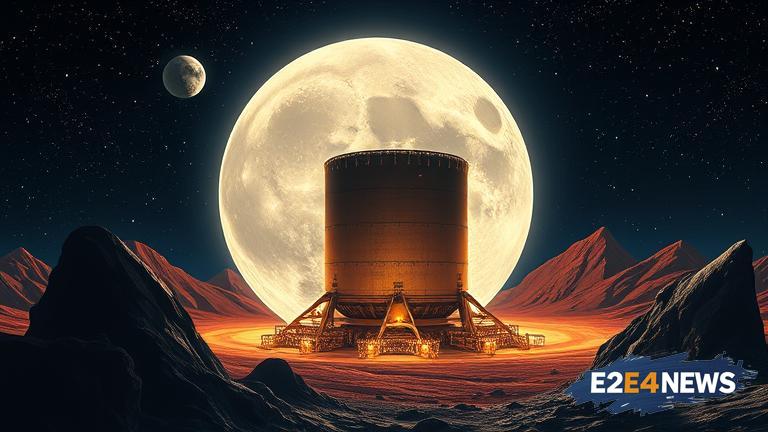NASA has announced plans to build a nuclear reactor on the moon, a project that could provide a reliable source of energy for future lunar missions. The reactor, which would be the first of its kind on the lunar surface, would be designed to provide power for a variety of applications, including life support systems, communication equipment, and scientific instruments. The project is part of NASA’s broader efforts to return humans to the moon by 2024 and establish a sustainable presence on the lunar surface. The nuclear reactor would be a key component of this effort, providing a reliable and long-lasting source of energy that could support a range of activities, from scientific research to exploration and development. The reactor would be designed to be compact and lightweight, making it easier to transport to the moon and deploy on the lunar surface. It would also be designed to be highly efficient, with a high power-to-weight ratio that would minimize the amount of fuel needed to generate a given amount of energy. The project is still in the early stages of development, but NASA has already begun working with private industry partners to design and build the reactor. The agency has also established a number of goals and objectives for the project, including the development of a reactor that can operate for at least 10 years without refueling. The reactor would be powered by a small amount of uranium fuel, which would be contained within a specialized reactor core. The core would be designed to be highly efficient, with a high power density that would allow it to generate a large amount of energy from a small amount of fuel. The reactor would also be equipped with a number of safety features, including multiple cooling systems and a robust containment structure. These features would help to prevent accidents and ensure that the reactor operates safely and reliably. The project has the potential to provide a number of benefits, including the ability to support long-term lunar missions and the development of new technologies and applications. It could also help to advance our understanding of nuclear energy and its potential applications in space. The project is part of a broader effort by NASA to develop new technologies and capabilities that can support a range of space-based applications. The agency is also working on a number of other projects, including the development of new propulsion systems and the creation of a sustainable presence on the lunar surface. The nuclear reactor project is an important part of this effort, and it has the potential to play a key role in supporting future lunar missions. The project is still in the early stages of development, but it has already generated a significant amount of interest and excitement within the space community. Many experts believe that the project has the potential to be a game-changer for space exploration, providing a reliable and long-lasting source of energy that could support a range of activities. The project is also expected to have a number of spin-off benefits, including the development of new technologies and applications that could be used in a variety of contexts. For example, the reactor could be used to power a range of applications, from scientific instruments to life support systems. It could also be used to support the development of new industries, such as lunar mining and manufacturing. The project has the potential to provide a number of economic benefits, including the creation of new jobs and the stimulation of economic growth. It could also help to advance our understanding of nuclear energy and its potential applications in space. The project is a key part of NASA’s broader efforts to develop new technologies and capabilities that can support a range of space-based applications. The agency is committed to making the project a success, and it is working closely with private industry partners to design and build the reactor. The project is expected to take several years to complete, but it has the potential to provide a number of long-term benefits. These benefits could include the ability to support long-term lunar missions, the development of new technologies and applications, and the advancement of our understanding of nuclear energy and its potential applications in space.
